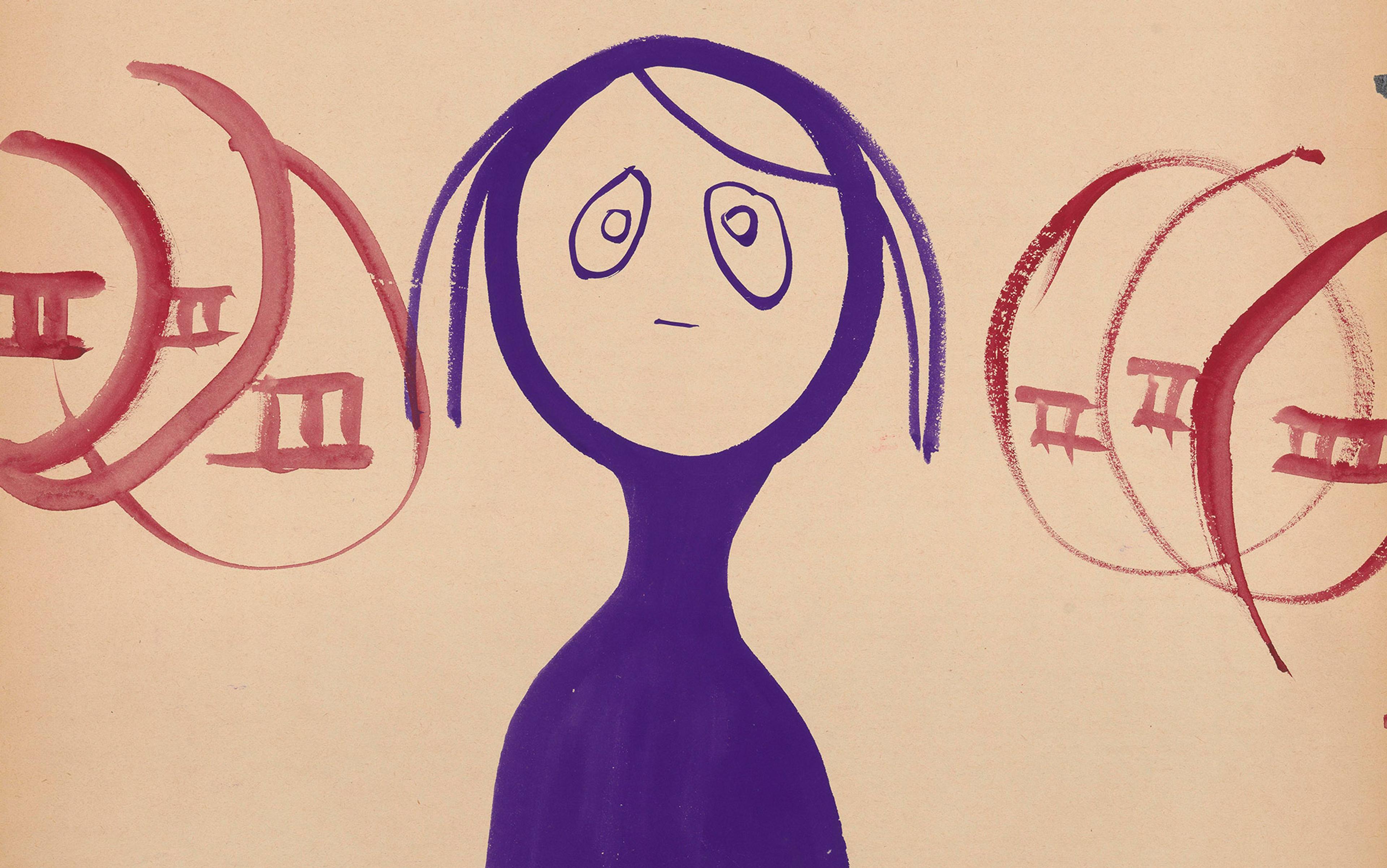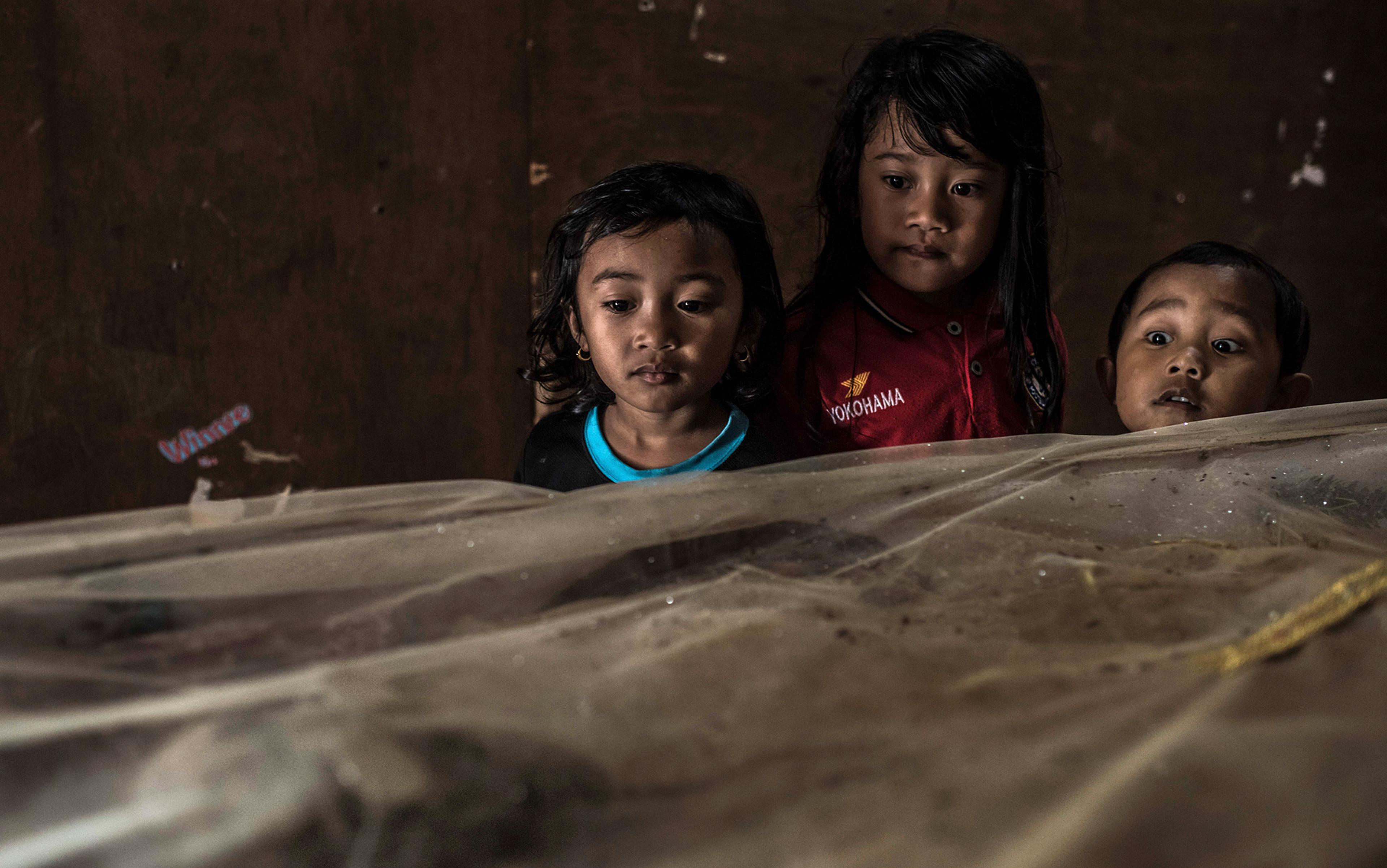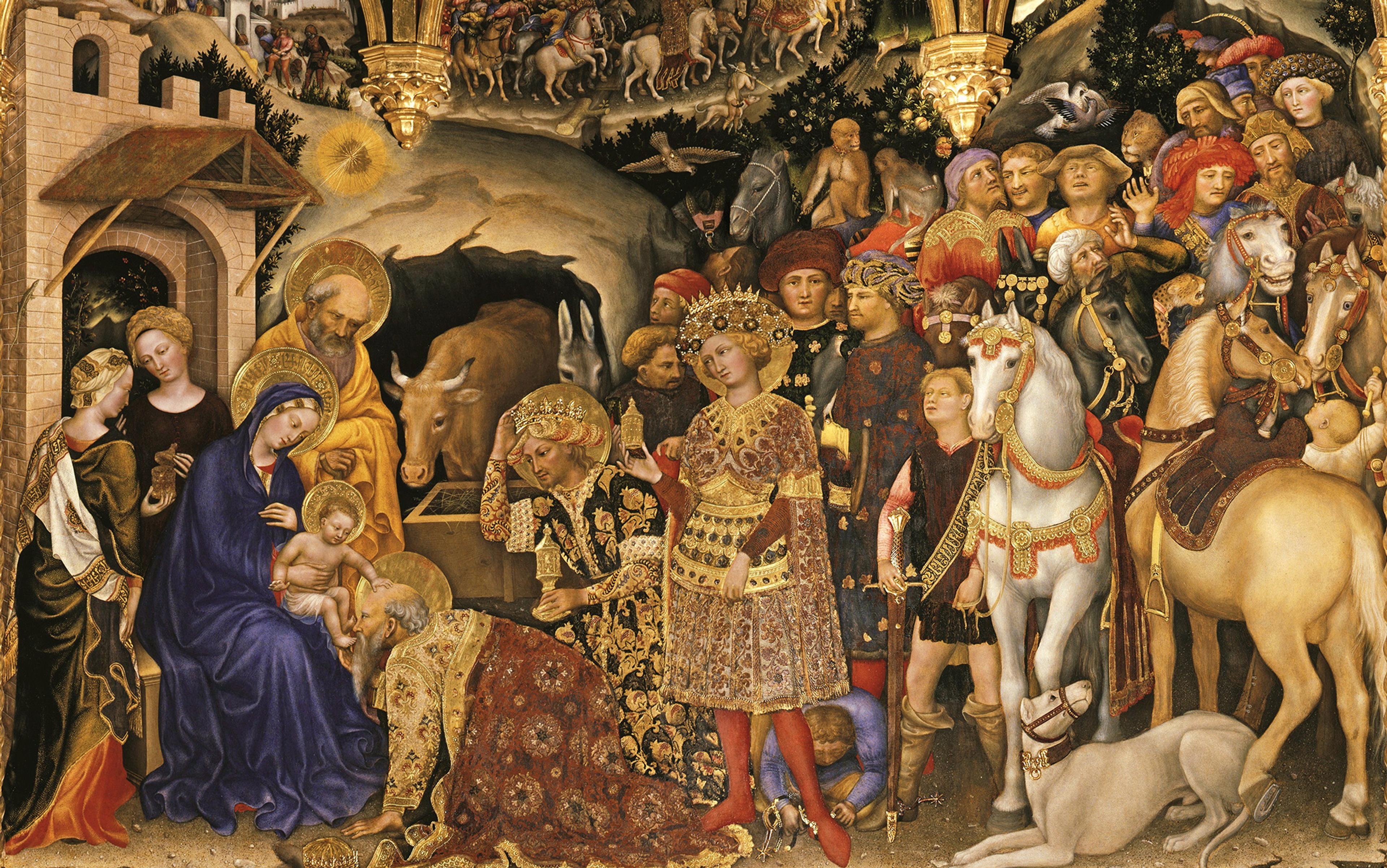I am in the house my parents have lived in for 33 years. The house that will soon be turned into an apartment complex, where I still have a room that I keep returning to like an animal to a watering hole. On my bed are cardboard boxes brought down from the attic. They are filled with miniature stainless steel household vessels, Barbie and Sindy dolls with all their paraphernalia – doll furniture, doll clothes, even a doll bathtub and commode. In a box of his own is Tom, my forever six-month-old.
It’s strange to see my old dolls again, as though a giant wave had reached into my childhood to drag these things from their sleep and vanquish them on the shore of my bed. All those tiny clothes and purses, fur coats, hangers, tennis racquets! I pick them up one by one: the sleek maroon evening dress, the sexy gold chachacha outfit, the entire range of woollen overalls and jumpers that my Welsh grandmother knitted in sets of two – for my sister’s dolls and mine. Most miraculous of all are the pairs and pairs of minuscule shoes, meticulously conserved in my mother’s old face-cream jars – pumps and slides and sneakers and stilettos. There’s even a feathery red and silver marching girl hat with matching boots.
Tom sits in his box, one blue eye blinkered shut. I reach for him, and I am a girl again, gently rattling his head so his eye can become unstuck. I remove his dusty clothes and take him over to the washbasin, softly soap his vinyl silicone legs and arms, taking care to avoid wetting his cushiony stomach. I rub his baby head and pat him dry. There’s something soothing about repeating actions I have not had to perform for so many years. All those hours petting and pretending to feed and talking to and cooing at.
In the land of dolls, puppets, mannequins, waxworks – all those inanimate objects enlivened with human qualities – there exists a tender-creepy boundary, a volatile and dynamic threshold that you may suddenly cross. The German psychiatrist Ernst Jentsch in 1906 termed this das Unheimliche, the unhomely, that which is uncanny, which displaces us and is born out of the uncertainty of knowing whether a thing is animate or inanimate. Sigmund Freud ushered the notion of the uncanny into the mainstream with his own paper on the subject 13 years later, fixing the root of it to repression; and in 1970, the Japanese roboticist Masahiro Mori applied the notion to robots, predicting that, while humans liked robots with humanlike qualities, if the robots became too human, it would tip us into ‘the uncanny [bukimi] valley’.
When I first brought Tom home to Madras in the summer of 1983, a delivery man, spying him from the front door, thought he was a real baby. Perhaps he felt a bukimi shiver along his spine when he found out he’d been duped by a doll. But all I feel on being reunited with my dolls is tenderness. Even the sad dolly legs and arms that have been loosened from their rubber sockets after being exposed to years of fierce humidity, the decapitated Kens, faces coated with mysterious white dust that no amount of scrubbing can wash off. Each object, a mnemonic talisman, bringing me to a place I’ve been separated from for so long.
Charles Baudelaire and Rainer Maria Rilke both wrote essays about dolls (Baudelaire more entranced with life in the miniature than Rilke, who got quite worked up about the ‘stolid and unchanging dolls of childhood’.) Both poets understood the uncanny as a quality that has to do with consciousness. A time arrives, Baudelaire wrote, when the child will shake and twist the doll, trying to prise it open, saying: ‘Mai où est l’âme?’ (But where is its soul?) Baudelaire located this point as the ‘first metaphysical stirring’, the beginnings of stupor and melancholy, when the child realises that no amount of shaking will engender any kind of response from the doll, that its soul will not be revealed. A sense of disillusionment arises as the boundary between fantasy and reality becomes clearer. For Rilke, the uncanny valley was more of an abyss. Odd that a poet who wrote such ardent ‘thing poems’ (Dinggedichte) could get so incensed by the passivity of dolls, blaming them for creating a distance between us and the world. He called it the ‘heart-pause’ – that feeling of being made aware of a larger-than-life silence that breathes on us: ie, death. How sitting opposite a doll as it stares at you can hurl you into that abyss.
I don’t remember feeling any heart-pauses with Tom except when I packed him away in an airless cardboard box before going to college. It felt treacherous, consigning him to a claustrophobic, lonely life in the attic while I set off on adventures. Like so many children across the world, I believed that my dolls came alive at night. In the Enid Blyton books, which were the staple of my childhood, toys sprang to life only when no one was watching. It was as though their animation was sparked by our nightly suspension. I sometimes heard the patter of feet against the floor, or a shuffling on the doll shelf, but I never stayed up trying to catch them in the act. I don’t think I actually wanted to see them alive any more than I wanted to see Santa Claus climb through the window grills. The story of Pinocchio was always a horror story for me – the doll coming to life and not behaving as he was meant to. It unsettled something in me. I adored my dolls because of their passiveness, for their steady availability for me to project any story onto them.
If, as Roberto Calasso writes in La Folie Baudelaire (2011), ‘the act of telling a story is the first, perhaps even the last, form of consciousness,’ then dolls can be an early route into this consciousness. Before play begins, there is an establishment of identity and roles. When my sister and cousins played on Sundays at my grandparent’s house in Madras, one of us would say: ‘I’m the fastest in the world’; another would say: ‘I’m the best cook in the world’; and then I’d go and spoil it by shrieking: ‘I’m the best in everything in the world.’ We all knew, though, that once you entered the game, all rules could change. The establishment worked only as a kind of threshold, a signal that we were moving from whatever world this was into another one.
Often, when we played, we did not even need our dolls. We could spin worlds out of a few old saris: doctor-doctor, marriage-marriage, house-house – the double repetition in the names of the games, echoing the goo-goo-ga-ga baby language that this world of play emanated from, pushing us into another realm of time that stretched outside the boundaries of ordinary time, a dreamtime that hovered in its own space above the insistent calls of comeforlunch or itstimetogohome: the kind of timelessness every lyric poem hopes to achieve. I think of that playtime now as the kind of space I want to enter as a writer. A suspension from linear time that allows for all kinds of transformations.
I find myself clinging to childhood artefacts – each doll, each minuscule plastic shoe a ladder into memory
I was a student in Charlotte, North Carolina, when I played house for the first time as an adult. Barely 18, and away from my parents and India, perhaps it was not so strange to find a thin-walled apartment overlooking an artificial lake, to fill it with furniture gleaned from yard sales, and call it home. The imaginary houses I’d built for my dolls as a child had been my first attempts at confronting danger. Like the story of the Three Little Pigs, I wanted a house with strong walls and safe beds, so that no wolf could huff and puff and blow my house down. Now that I was facing a real-world adversary – a man just a few years older than me, who was short-tempered and had slapped me about a few times – I struggled to make sense of how you could have taken such care to make a home and still feel that everything around you was precarious.
Many years later, watching a production of Henrik Ibsen’s A Doll’s House (1879), I’d recognise the feeling of awakening, the lights-on-consciousness that electrifies Nora as she walks out of the house, leaving behind her husband and children. The shattering of illusion (whose etymological roots lie in the Latin in- ‘upon’ + ludere ‘to play’), the break of play within play. I felt it viscerally – a remembrance of my own claustrophobia, the whiplash of epiphany: I don’t want to play anymore. Calling my best friend Yemi and saying: ‘Please can you come get me?’ The weightlessness of leaving things behind.
I feel it again now, the boundaries of the world shifting, a rupture that threatens to dismantle my link to the past, and endanger whoever I will be in the future. I find myself clinging to childhood artefacts – each doll, each minuscule plastic shoe a ladder into memory. And even though I haven’t thought about my dolls, or held them in my hands for years, to see them again coated in the silverdust of the past evokes such strange proprietorial emotions in me. I must decide on their fate because there is not enough space for them now that we’re bringing the house-house down.
Is there a place on the tender-creepy continuum for a 48-year-old woman who cannot let go of her dolls? Elizabeth Bishop, writing from Brazil to her friend Pearl Kazin in 1952, asks if Pearl can send her Aunt Mary in Canada a copy of The New Yorker, in which her essay ‘Gwendolyn’ will appear. ‘I bet Aunt Mary has still got that doll,’ Bishop writes, ‘she’s that type.’ (Emphasis mine.)
In ‘Gwendolyn’, Bishop writes of her childhood in Nova Scotia, and the death of a girl, Gwendolyn Appletree, who represented ‘everything that the slightly repellent but fascinating words “little girl” should mean.’ Everyone in the village fusses over Gwendolyn because she is diabetic, although this does not stop her parents from dunking sugar cubes into her tea. When Gwendolyn comes over to play, she confides that her mother allows her to say her prayers in bed because she’s going to die soon and, in fact, a few days later, she does. Bishop isn’t allowed to go to the funeral, but she looks out of the lace-curtained parlour window, where she sees black buggies congregating. She hears the church bells, tries to identify the hymns that are being sung, and – here is the leap – she imagines two men leaning the small white coffin against the church wall and sees Gwendolyn shut inside there, forever alone, which sends her howling through the back door.
Months later, playing with her cousin Billy, Bishop has the idea to fetch her Aunt Mary’s doll, wrapped in pink tissue in a bottom drawer. They strip her down and try to operate on her unsuccessfully. They lay her out in the grass and make her a wreath with Johnny-jump-ups, and then, suddenly, one of them realises that this is Gwendolyn’s funeral and that the doll’s name had been Gwendolyn all along. It’s not that Bishop and her cousin actively decide to enact the funeral, but that the doll allows them to explore their fears of death, to get close to that adult world they are distanced from. Through play, the imagination rushes in to fill the spaces we cannot know but long to.
Leda befriends the mother-daughter duo on a beach vacation, and then steals the little girl’s doll
Baudelaire gets it wrong in his essay on toys, ‘Morale du joujou’ (1853), when he excludes from ‘the great drama of life, scaled down inside the camera obscura of the childish brain’ those little girls who put on grown-up airs and chat about their outfits and present their imaginary children to one another. He believes this kind of play is just practice for the ‘immortal future puerility’ that awaits them, and decides that none of these types will ever become his wife. But enactment is not mere mimicry. While the exploration of motherhood is inextricably tied to the play of dolls, murkier deliberations pulse underneath.
Elena Ferrante, the literary maestra of dollage, upends this murk. There is nothing soothing or idyllic about motherhood in her novels. In her memoir Frantumaglia: A Writer’s Journey (2003), she reveals how the act of writing often drags in unspeakable things. In The Lost Daughter (2006), Leda befriends the mother-daughter duo of Nina and Elena on a beach vacation, and then unfathomably steals the little girl’s doll. No explanation is given, but we know that Leda’s relationship with her own daughters is fraught, and that this doll serves as a kind of proxy for her guilt and anger. After the publication of The Lost Daughter, Ferrante says she kept circling round the subject, and it was no coincidence that when she began writing about Lila and Lenú’s friendship in the Neapolitan Quartet (2011-14), she started again with a game of dolls.
Dolls in Ferrante’s fiction are not just totems or stand-ins, they are conduits for these unspeakable things – envy, ambivalence, abandonment, disappearances. Rather than creating a distance between us and the world, the heart-pause as Rilke suggested, they are objects that bring us closer. Without them, a link is severed.
When Leda steals the child Elena’s doll, the relationship between mother and daughter, thus far harmonious, falters. The doll is the third entity that they had both ventriloquised and lent their voices to. Without the physical presence of the doll, the possibility of that thirdness vanishes. Much in the way that Constellation Therapy allows family members to engage in role play to reveal the hidden dynamics within their relationships, or the simple act of keeping a journal serves as a form of triangulation between inner and outer worlds – an idealised versus a real self – for Ferrante, dolls act as intermediaries, often forcing a confrontation or revelation.
In Frantumaglia, Ferrante writes that, for our whole lives, ‘the erotic vapour that the maternal body gives off for us alone will be at the same time a cause for regret and a goal.’ Anyone who has ever played with dolls understands what this erotic vapour means – a desire to enter the adult world that shimmers so far away; and, for children, the way to do that is frequently through the curiosity of the mother’s body, the agency that comes from harnessing that powerful body. This is why I found Greta Gerwig’s blockbuster Barbie movie so disingenuous. To desex this overtly eroticised doll? The fey ignorance of not knowing what it is that girlfriend and boyfriend do? My friends and I had no idea how sex worked when we played with our Barbies, but we were surely trying to inch toward some understanding of it through play. And while it’s true that Barbie was everything, and Ken was just Ken, in the same way that when we played our heteronormative marriage-marriage, my cousins and I would grudgingly take turns being the groom, because the groom was just a prop. Like Ken, their presence was required because they were the agents that supplied the flicker of electricity that set the game in motion.
Mahasweta Devi explored a version of this erotic vapour in her radical play Urvashi and Johnny, written in 1975 during the Emergency in India, presaging the now-common headline ‘Man Falls In Love With Doll’. Johnny is a ventriloquist who finds out he has cancer of the throat, but his love for his marionette, Urvashi, is boundless. Johnny’s friends tell him to give up Urvashi; that, if he doesn’t, she’ll finish him. But if Johnny cannot sing, he cannot make a living, and while his love is not overtly erotic, he does whisper to her: ‘I’ll make love to you today … Shall I put the lamp out? … Shall we make love in the dark?’ The curtain closes on Johnny and Urvashi in performance, their audience asking her to sing, and Urvashi being unable to, Johnny’s lips moving up and down, mouthing I’m not well, I’m not well. Urvashi’s voice stops with his, the stifling of voice here being a clear metaphor for the entire nation’s silencing.
I come back to Rilke and Baudelaire pinpointing that disconnect between animate and inanimate as a tear in consciousness. Perhaps this need to make alive, this flicker of possibility that we keep renewing through play as children and have to reconfigure as we grow older, is simply the need to establish a relationship between the self and the world. In Hindu philosophy, the entire world is meant to have been brought into creation through lila, the divine play of the gods. The idea that the universe came into being because of spontaneous, joyous, cosmic play, as opposed to the more dutiful ‘and then God said’, has always appealed to me. Play that is not frivolous but fundamentally generative, world-making. It bears close relation to the idea of maya or cosmic illusion, the veil that obscures the true nature of reality: that push-pull against the borders of what is real and what is not that children negotiate through play. I think of the intense ritualistic practices that Hindu priests follow to animate their idols – waking them each morning, feeding, bathing, dressing, carting them out on chariots for festivals, putting them to sleep and then repeating, and how close these actions are to our play with dolls, who are empowered and enlivened through rituals of our own creative energy.
And yet, how to reconcile the utter creepiness of seeing a dismembered doll on the beach? Or even a perfectly intact one, like the one Bishop’s aunt kept wrapped in tissue, mummified in a bottom drawer. Or my own family’s reaction to Tom, now emancipated from his cardboard box and propped on a chair in the bedroom, because I don’t know what to do with him. What is this haunting quality of a doll that has outlived childhood? If I gave Tom to a child, would he become animated again and, therefore, less creepy? Would that child be like one of the brats Baudelaire wrote about, poking at his stuck eye, looking for his soul?
One of the most disturbing doll sequences in literature is in Toni Morrison’s The Bluest Eye (1970). I read it in college in Charlotte, when grappling with the race dynamics and religious fervour of the American South – I was asked whether I was into the ‘cow thing’ (Hinduism), and wasn’t I afraid of burning in hell. Reading Morrison was a visceral experience, excavating long-ago layers of my childhood. Why did I have a doll with blue eyes, and why was his name Tom? And was I secretly proud of his blue eyes and wished I had them too? My mother is Welsh, so I had significant exposure to a place where people had blue eyes and were called Tom, but all my friends in Madras had grown up reading Enid Blyton, so on some level, we must have existed in a kind of double unheimlich, the reality of a South Indian metropolis jarringly different from English boarding schools and picnics with jam rolls in fields of buttercups.
She’s given a blue-eyed baby doll, and her only desire is to examine what about it the world found loveable
We felt little dissonance at the time. An English meadow or a tree in an enchanted forest that had swirling worlds at the top of it were equally distant. Our imaginations were capacious enough to shortcircuit geography and utilise spaces that were foreign as though they were home. Perhaps the greatest dissonance is that, despite my hours and hours of maternal training as a child, I grew up deciding not to have children, and to have baked maybe three subpar cakes in my life.
In The Bluest Eye, Claudia MacTeer, a young Black girl and our primary narrator, receives a white doll for Christmas, when all she wants is to sit on the kitchen stool with her lap full of lilacs listening to Big Papa play his violin. Instead, she’s given a blue-eyed baby doll, and her only desire is to dismember it, to break it off bit by bit and examine what about it the world found loveable.
The doll here is an embodied symbol of all that is considered beautiful by society, and the damage this internalisation can have on a child who does not see a reflection of herself in the narratives around her. Destroying the doll becomes a mode of resistance; emptying it out to see that it is simply sawdust and gauze and a little metal disc that says ‘Mama’ reveals how unbeautiful it is. Later, Morrison writes how the dismembering of the dolls was not the true horror: ‘the truly horrifying thing was the transference of the same impulses to little white girls … What made people look at them and say, “Awwwww,” but not for me?’ Morrison’s radical vision allows Claudia to sit with this horror, to understand that, if she pinched out the eyes of little white girls, their eyes, unlike the baby doll’s eyes, would fold in pain. This disinterested violence comes to repulse her, as she moves towards understanding that white girls like Maureen Peal, who were so beloved by everyone else, were ‘not the Enemy and not worthy of such intense hatred. The Thing to fear was the Thing that made her beautiful, and not us.’
Dolls facilitate such triangulations and continue to inspire tender-creepy responses from us largely because their history as ritual object and play thing has been so closely entwined with fertility and death. Victorian mourning dolls, dressed in the deceased child’s clothes and forged from wax to look as though the child has simply gone to sleep (maximum creepy); Egyptian Shabti dolls made from stone or wood, placed in tombs to serve the deceased in the afterlife; Hopi Katsina dolls, ivory Roman dolls with articulated hips, heart-faced Japanese Dogū dolls, wooden Akua’ba fertility dolls consecrated and carried by women who hope to conceive – the sheer variety of dolls across cultures and time that’ve served as emissaries between the realms of the living and the dead is staggering. They’ve communicated with ancestors, acted as focal points to transfer illness, exorcised fears, protected and comforted. These objects that lack consciousness themselves have given humans pathways to access their own consciousness.
‘One must go beyond logic in order to experience what is large in what is small,’ wrote Gaston Bachelard in The Poetics of Space (1958). He was expressing his love for the miniature and its ‘intimate immensity’, identifying something about our desire to create worlds within worlds, to be god-like even if we feel like marionettes, pushed and shoved by forces beyond us. Reading about the remains of our Bronze Age ancestress, who 4,000 years ago played with a stone doll with wavy hair and a miniature set of terracotta cooking pots, is in some ways to fall into a crack of time. The opposite of a bukimi valley, it’s a valley of wonder that speaks to our need to begin with the miniature, to scale down the universe to something we can see whole, and perhaps even control, to map ourselves onto time with stories and, by doing this, transform and reshape the world.






